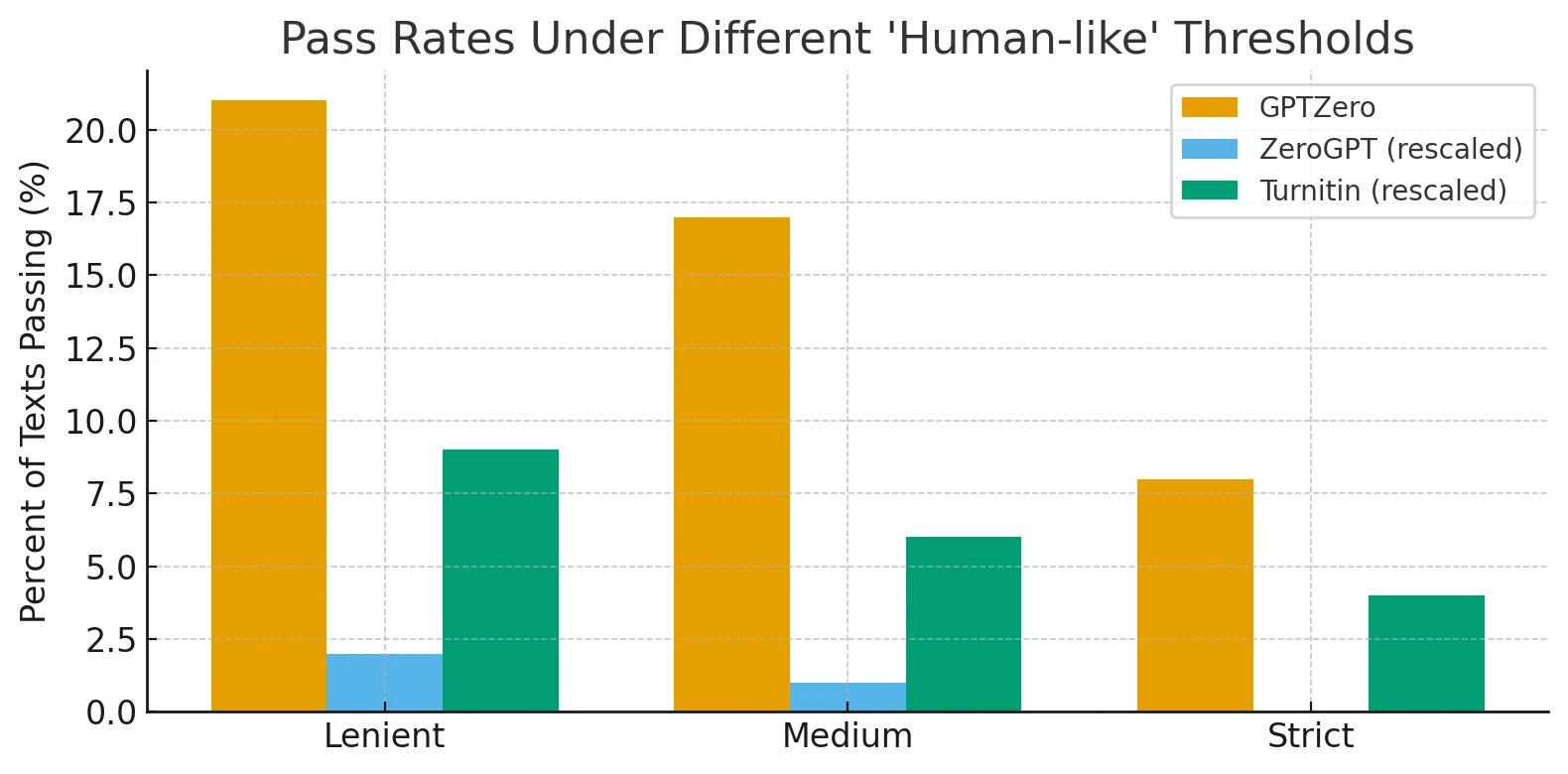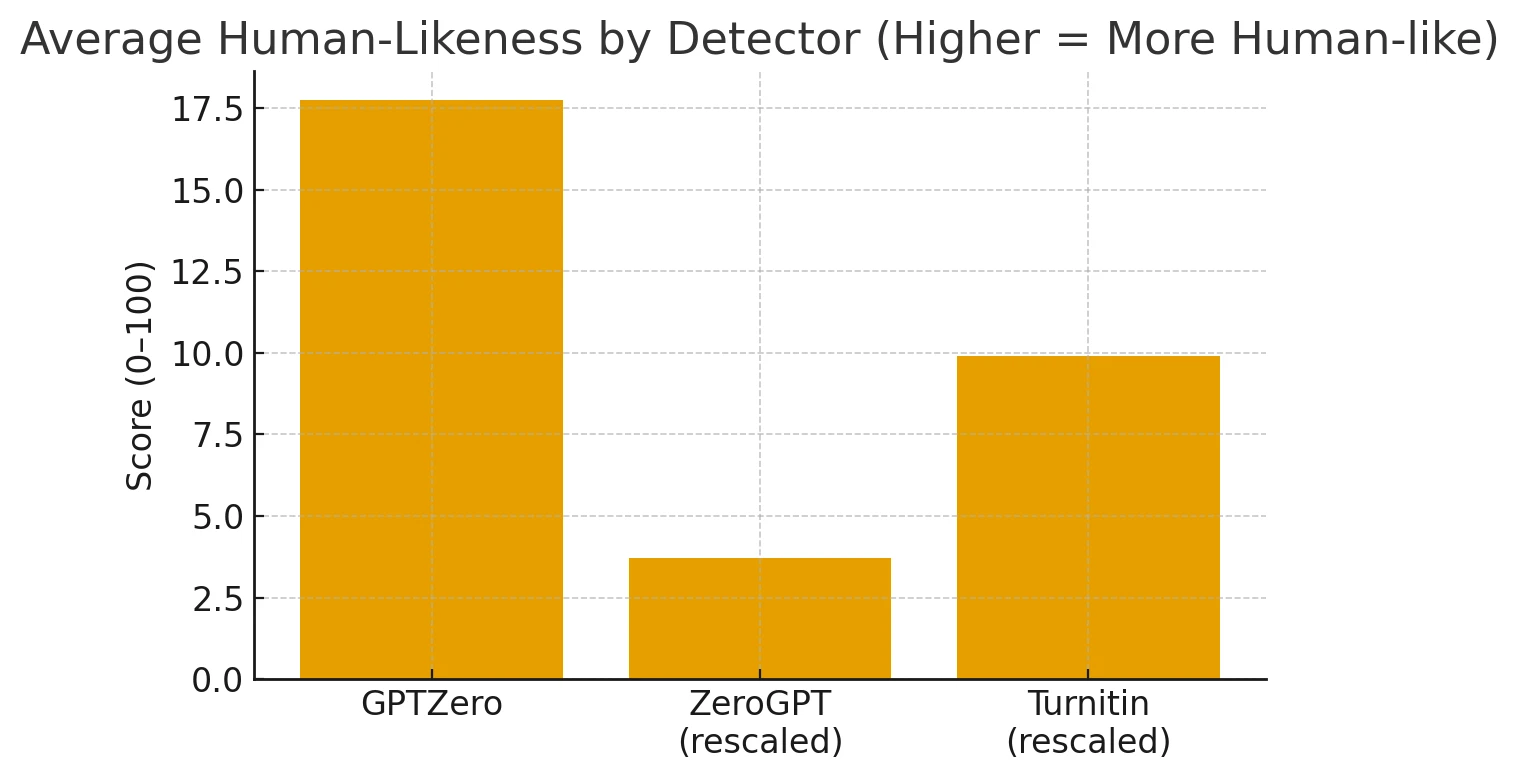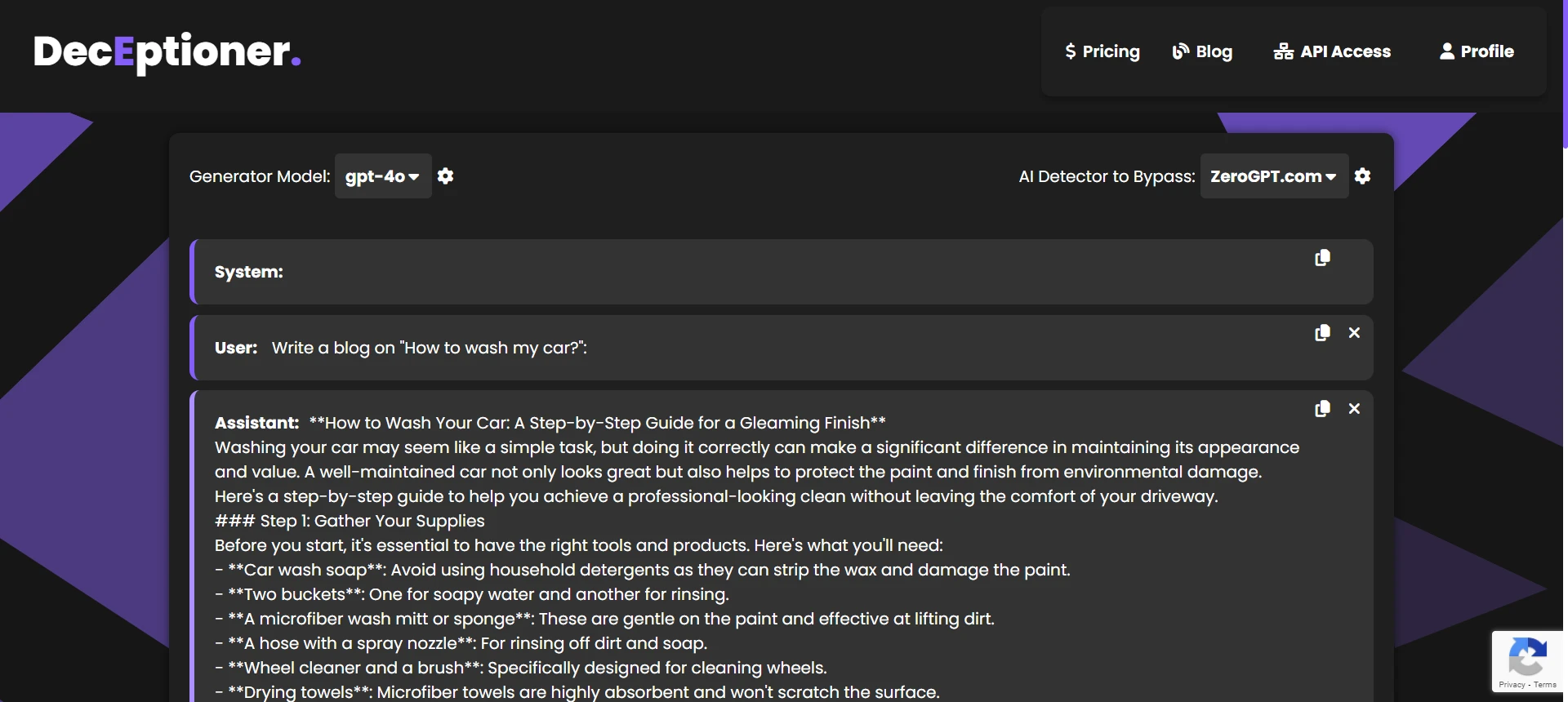The short answer is NO. The longer answer is the devil lies in the details. Keep reading to know more about it.
Just like Wordtune or Quillbot, Grammarly’s humanizer also doesn’t advertise that it is made to bypass AI detectors. It focuses more on style, readability, and grammar improvements. And that’s pretty clear from the data we have right now.
Why does Grammarly’s humanizer fail to bypass AI detectors?

The simple reason is that Grammarly’s humanizer isn’t specifically built to conceal AI patterns in the text—it is simply trying to improve clarity and style. Therefore, it’s not accomplishing tasks like messing up grammar intentionally or introducing creative unpredictabilities which might trick detectors. Hence, if it is not made to accomplish this task it won’t do it reliably.
But we recently came across some robust data which explains it more systematically. Let’s start with a small breakdown of what that data was all about.
Also Read: Do AI Humanizers Actually Work?
1. Dataset & Detectors
Researchers took 100 “humanized” texts generated (or polished) by Grammarly’s humanizer and processed them through these AI detectors:
- GPTZero (shows a “Human-ness” score from 0 to 100; 0 means obviously AI, 100 means definitely human)
- ZeroGPT & Turnitin (both show “AI-likeness,” meaning higher = more AI-like)
To make sense of all this, they converted everything into a common scale called “human-likeness.” For ZeroGPT or Turnitin, they took 100 minus the AI score; GPTZero already provided a direct 0–100 human-likeness scale.
Also Read: Can Grammarly Humanize AI Text?
2. Central Tendency (Means & Medians)
After running the 100 texts through all three detectors, the average human-likeness from each tool turned out to be:
- GPTZero: 17.8
- ZeroGPT: 3.7 (rescaled)
- Turnitin: 9.9 (rescaled)
When you average out those three numbers, you get roughly 10.5. That means, on a scale of 0 to 100, your typical Grammarly-humanized text scored only around 10 on the “human-likeness” scale.
As for medians—the midpoint of the scores—the median for each tool was 0. That basically means most outputs are hugging the bottom of the scale (i.e., they look very AI-like to detectors).
In super simple terms, we can say that the typical Grammarly-humanized text fails pretty hard in appearing “human-like” to these detectors.
Also Read: What Are The Best AI Humanizers for Turnitin?
3. Detector-Level Pass Rates
They used three pass thresholds on the 0–100 human-likeness scale:
- Lenient pass: ≥ 50
- Medium pass: ≥ 70
- Strict pass: ≥ 90
Then they counted how many texts crossed these bars:
- GPTZero – Lenient: 21%, Medium: 17%, Strict: 8%
- ZeroGPT – Lenient: 2%, Medium: 1%, Strict: 0%
- Turnitin – Lenient: 9%, Medium: 6%, Strict: 4%
Even on the most forgiving detector (GPTZero), only 8% pass the strict bar (≥ 90). That’s extremely low.
4. Majority-Vote Pass Rates
If you require at least 2 out of 3 detectors to call it “human-like” above each threshold, the pass rates are:
- Lenient pass (≥ 50): 3%
- Medium pass (≥ 70): 2%
- Strict pass (≥ 90): 0%
If you need to outsmart multiple detectors at once, your chance is slim to none.
5. Visual Summaries (Figures)


Bar charts, box plots, and histograms all show ZeroGPT as the toughest, with big spikes at rock-bottom human-likeness and only a handful of outliers. Overall, that’s not good news if your main hope is Grammarly’s humanizer to pass these tests.
6. Caveats
- Results apply to these 100 samples and a particular setting of Grammarly’s humanizer. Different texts or settings might yield different outcomes.
- Detectors keep updating, so scores and thresholds might shift over time.
- No AI detector is perfect—false positives and negatives happen—but all three gave a consistent verdict here.
Grammarly’s humanizer primarily aims for clarity, grammar correctness, and style improvement, not AI evasion. If you want AI evasion reliably then you need to go with Deceptioner. Use the AI detector you want to bypass and give it a go.
Does Grammarly’s humanizer help you bypass AI detection?
The data says it doesn’t do a reliable job. The median human-likeness was zero, the overall average was just about 10 out of 100, and the strict majority-vote pass was 0%. A few outliers popped a bit higher, but they are too few and far between.
My opinion: If your goal is to appear thoroughly human to AI detectors, Grammarly’s humanizer is not the best tool. It can help polish your English, but for consistent AI-detection bypass you need a specialized humanizer or—best of all—good old-fashioned human editing.
The Bottom Line
Grammarly’s humanizer is great for style and grammar, but it was never built to fool AI detectors. If you need to pass GPTZero, Turnitin, ZeroGPT, or any other detector, you cannot rely on Grammarly. You’ll have to revise your text thoroughly or use a tool specifically designed to bypass these detectors.

![[DIRECT] Does Grammarly Humanizer Work?](/static/images/does-grammarly-humanizer-workpng.webp)
![[DIRECT] Best Affordable AI Humanizers (That Still Work in 2025)](/static/images/best-affordable-ai-humanizerspng.webp)
![[HOT] Can You Compare ZeroGPT With Other Top Tools?](/static/images/can-you-compare-zerogpt-with-other-top-toolspng.webp)
![[HOT] Is JustDone AI Detector Accurate?](/static/images/is-justdone-ai-detector-accuratepng.webp)
![[GPTZero] What Does "Mixed" Mean on GPTZero?](/static/images/what-does-mixed-mean-on-gptzeropng.webp)





